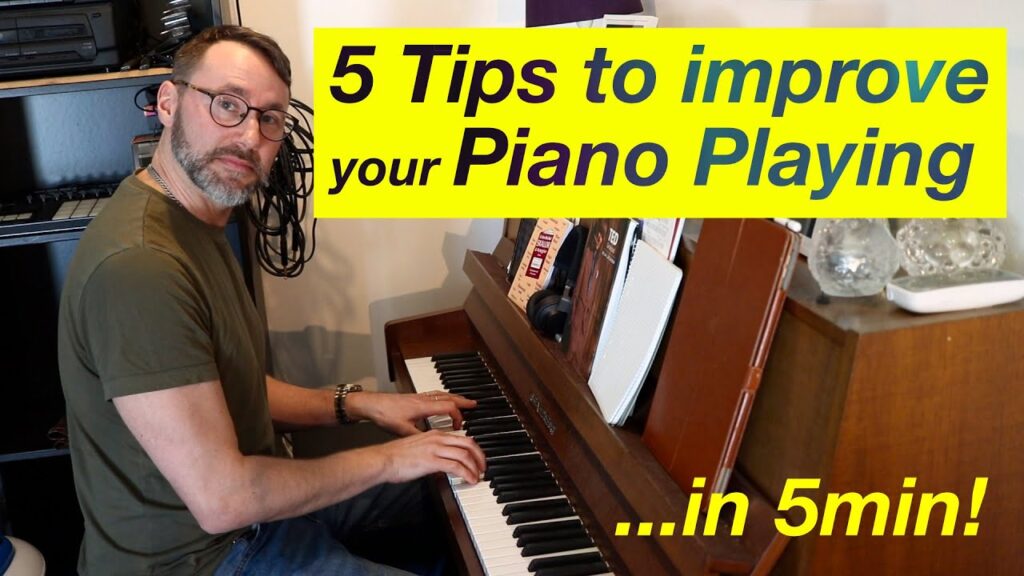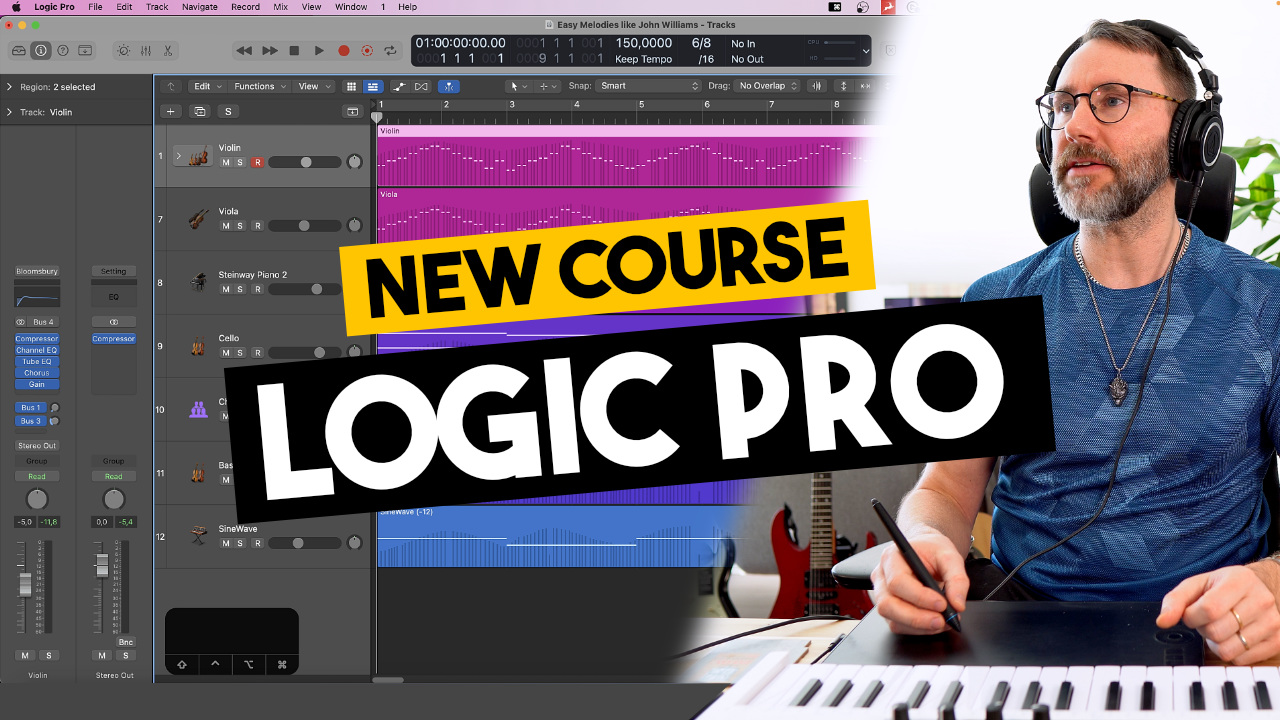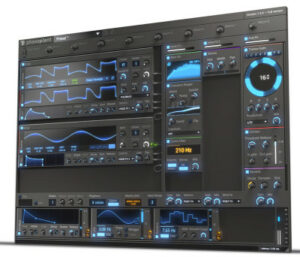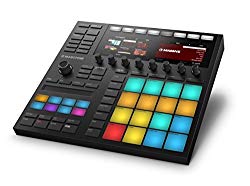Becoming a professional piano player and fluent on the keyboard takes time and effort. Yes, there is no quick solution or short cut! But with these 5 tips to improve your piano playing article and video I want to show the concepts I use to make the piano performance sound more intricate and alive!
5 tips to improve your piano playing
Here are a few different concepts you should practise to become a better piano player:
- Arpeggio – Break up the notes of the chords in the progression. Play them in arpeggios with your right hand, and play the bass (in octaves) in your left hand.
- Timing variations / flairs – Don’t just settle for straight notes…like quarter, 8th, 16th notes. Add some trioles or more fluid rhythms. Spice the performance with some musical flairs and make the part come alive.
- Inversions & octaves – Play the broken chord arpeggio in different inversions and walk through different octaves.
- Arpeggios with both hands – Play the chord arpeggio with both hands. Start from left and walk up to the right hand (and maybe back)…or why not start high and walk down. Anything goes, as long as you play with passion! I know this is a bit hard to master, and get the notes fluid and tight… but it’s super rewarding so make sure to practise this key concept.
- Ostinato – Select three notes that can play through all the chords in the progression. Play these notes in a repeating figure with your right hand while you walk through the chord progression with your left hand. Try to swap them out too.
Where to go from here on the piano?
These are just a few concepts you could practise. As you can see/hear in the video I often pick a few of these concepts and randomly switch between them as I perform on the piano. My tip is that you start practising these concepts one by one to get a good feel for their flow and sound. Then try swapping between them as you play through your favourite chord progressions.
Great finger excercise for the piano player – How to build finger strength
You should always strive to improve your finger strength and constantly challenge yourself with new rhythms and chord voicings. With time this will really pay off in your piano playing and piano improvisation.
If you want to improve finger strength and at the same time accuracy, a simple excercise is to place one of your hands firmly in front of you on a table. Let your hand be slightly curved like if you were going to play on the piano keybed.
Begin with your thumb, lift one finger at the time and place it down with a “thump” like if you were playing a key. Try to play with the same pressure on all fingers when they go down.
In the beginning your thumb, index and middle finger is probably going to be the strongest. But with this excercise (and some practise) even your ring- and pinky finger will get stronger.
The great thing about this excercise is that you can practise this fake “playing” wherever you are. Practise on the job, in the couch, on the bus, in the car. Yes, I used to practise this on the stearing wheel when I was driving to/from music school. 😄
I hope this video and article on how to improve on the piano was helpful!
If you like this piano playing concepts video you can check out these additional videos I did and learn more about ostinatos and pedal point!
More videos on piano playing and composition techniques
Feel free to ask me any questions in the video comments! I try to answer every comment I get!
Thanks for reading / watching!
// Mattias
















